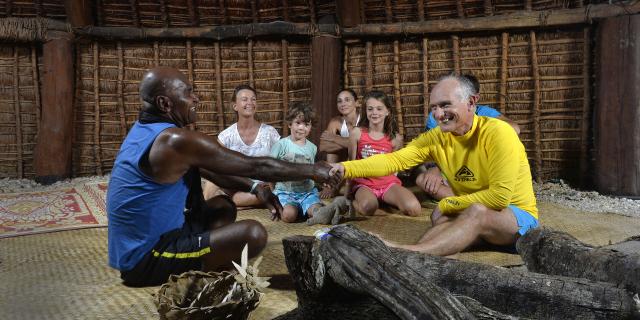 Home En Tribu Chez Hélène Thomas Boucher 2033 01 16
Home En Tribu Chez Hélène Thomas Boucher 2033 01 16 Home En Tribu Chez Hélène Thomas Boucher 2033 01 16
Home En Tribu Chez Hélène Thomas Boucher 2033 01 16 Home En Tribu Chez Hélène Thomas Boucher 2033 01 16
Home En Tribu Chez Hélène Thomas Boucher 2033 01 16 Home En Tribu Chez Hélène Thomas Boucher 2033 01 16
Home En Tribu Chez Hélène Thomas Boucher 2033 01 16 Kanak custom in Lifou
Kanak custom in LifouIn the tapestry of Kanak culture, customs hold a central place in human interactions. These customs manifest on various occasions and take diverse forms, including wedding customs, mourning rituals, and welcoming ceremonies. As a tourist, when invited to a tribe, you’ll participate in a custom, which serves as your introduction, an expression of respect, and a display of humility towards your gracious hosts. The value of the custom is not measured in monetary terms but in the mutual recognition it signifies.
Life in Kanak society revolves around significant milestones and social activities that punctuate daily existence. These so-called “customary” gestures involve the presentation of gifts such as mats, coins, cloth, or other items, accompanied by a speech. These gestures signify the acknowledgment of life’s rules and fundamental values in Kanak and Caledonian society: hospitality, respect, and humility.
While customs vary, common elements include taro and yam, pandanus leaf mats, and Kanak currency. When meeting your Kanak host, the custom becomes a unique and cherished moment where two worlds converge. It’s an opportunity to introduce yourself, explain your purpose, and express gratitude for their hospitality.
The customary gesture can be performed upon arriving at your host’s home when you’ve been invited. It involves introducing yourself and exchanging greetings. Additionally, the custom is observed when departing from your host’s presence. If you plan to visit an area situated on customary land, the custom serves as a request for permission to enter the tribe.
Typically, you would present your gesture to the tribal chief or sub-chief. Note that the customary gesture may not be necessary if you are part of a tribal homestay, pre-arranged in advance.
While it’s customary for visiting tourists to offer a 500 XPF bill and a piece of cloth (manou), in reality, you can choose to bring something else, such as a specialty from your region. The sincerity of the gesture is what truly matters, as it signifies humility. The primary steps involved are as follows:
Once you’ve conveyed your message, your interlocutor will respond reciprocally to your words, accepting your gesture. It’s important to note that your interlocutor may keep their head lowered during this exchange, as it’s a sign of respect and active listening.
 Traditional welcoming custom in Nouméa
Traditional welcoming custom in NouméaIn addition to traditional Kanak customs, there are many other traditions that are dear to the hearts of New Caledonians. Knowing them means understanding a part of Caledonian culture, so you’re better equipped to immerse yourself in it once you’re here! Common traditions include :